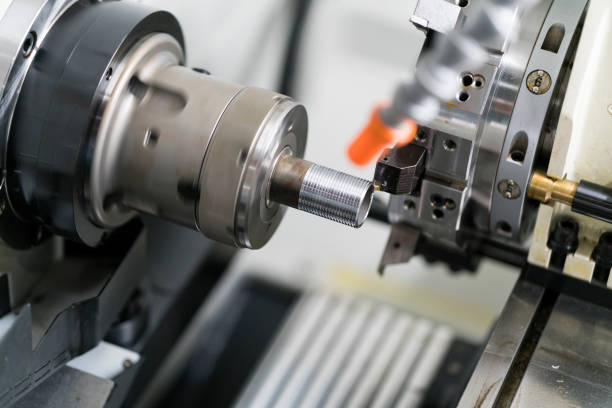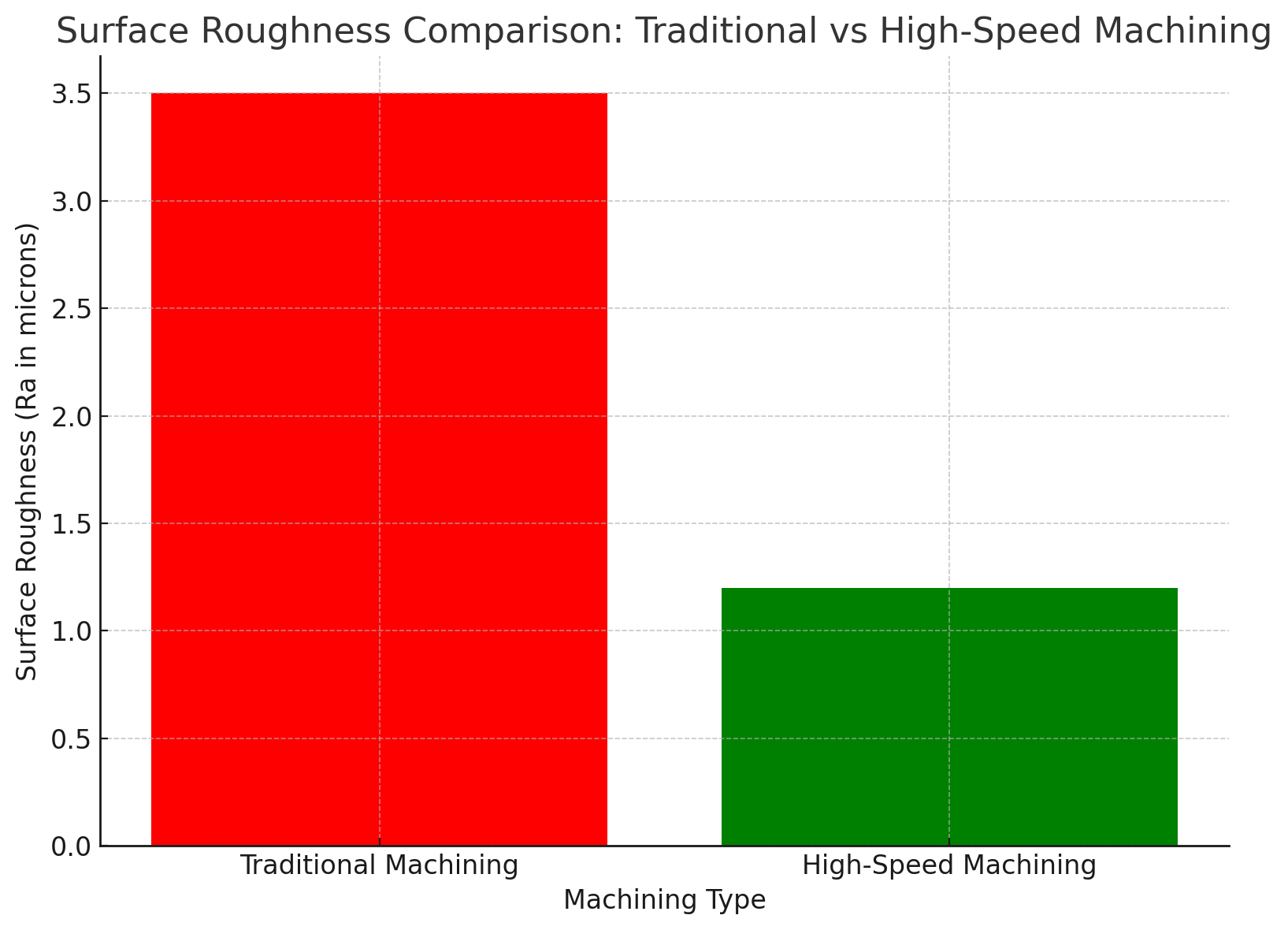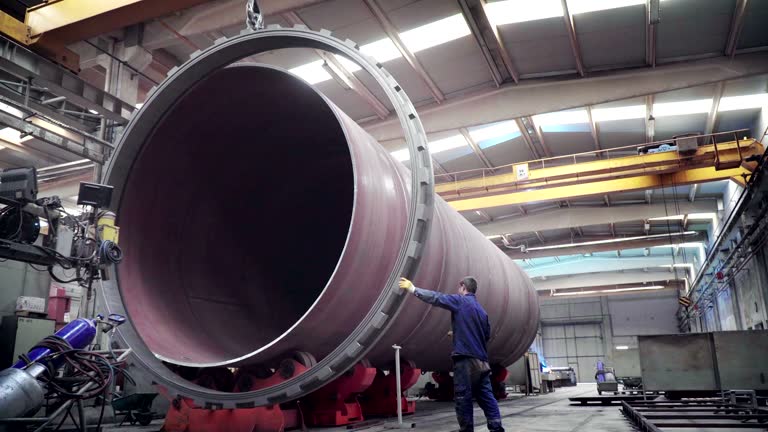Manufacturers often face challenges in maintaining both speed and precision during machining operations. Traditional methods generate excessive heat, causing tool wear and reducing accuracy, leading to inefficiencies. High-speed machining (HSM) offers a solution using advanced techniques combining rapid spindle speeds and feed rates. This approach minimizes heat generation and wear while ensuring precise cuts and smoother finishes. By adopting HSM, manufacturers can reduce production times and improve overall product quality and operational efficiency.
High-speed machining (HSM) is a process that focuses on removing material quickly and accurately by utilizing high spindle speeds and feed rates. Unlike traditional machining, which often involves slower, heavier cuts, HSM uses lighter, faster cuts to achieve precision while minimizing heat and tool wear.

HSM operates with significantly higher spindle speeds, allowing for faster material removal and smoother surfaces. The process is enhanced by CNC and CAM technologies, which provide precise control over tool movement, ensuring efficiency and accuracy. CNC programming enables real-time adjustments, optimizing both speed and feed rates, making HSM ideal for producing complex parts quickly and effectively.
High-speed machining offers several critical advantages for modern manufacturing. Increasing spindle speeds and reducing cycle times enhance productivity and precision. These benefits, better tool life, and material efficiency make HSM a preferred choice for many industries.
One of the main advantages of high-speed machining is its ability to significantly reduce cycle times. With faster spindle speeds and feed rates, operations can be completed in less time compared to traditional machining methods. This reduction in cycle time directly translates to faster production, allowing manufacturers to complete more tasks in a given timeframe. For example, components that previously took hours can now be finished in minutes, streamlining the manufacturing process.
The increased speeds allow more parts to be produced per hour. In mass production, this efficiency boost is critical. High-speed machining minimizes downtime between operations and enables continuous production, resulting in higher output without compromising quality. Manufacturers benefit from faster delivery times and improved workflow, making high-speed machining an optimal solution for industries that require rapid, high-volume production. By increasing productivity, businesses can meet demand more effectively and improve profitability.
|
Factor |
Traditional Machining |
High-Speed Machining |
|
Cycle Time (per part) |
20 minutes |
8 minutes |
|
Parts Produced per Hour |
3 parts |
7 parts |
|
Operational Efficiency |
70% |
95% |
|
Downtime per Shift |
1 hour |
15 minutes |
|
Annual Output (based on 8-hour shifts) |
5,760 parts/year |
13,440 parts/year |
High-speed machining provides enhanced precision by minimizing heat generation and vibration during operations. Traditional machining methods often result in significant heat buildup, which can cause expansion and distortion of materials, leading to inaccuracies. However, with high-speed machining, the rapid spindle speeds and lighter cuts reduce heat transfer, maintaining the material's structural integrity and improving overall accuracy.
Dimensional accuracy is particularly crucial when machining complex geometries and intricate parts. High-speed machining allows manufacturers to achieve tighter tolerances, ensuring that even the most detailed components are produced with precision. This is essential for aerospace and medical manufacturing industries, where slight deviations in part dimensions can affect performance.
|
Material/Geometry |
Traditional Machining (Tolerance Range) |
High-Speed Machining (Tolerance Range) |
|
Simple Metal Parts |
±0.05 mm |
±0.01 mm |
|
Complex Metal Parts |
±0.1 mm |
±0.02 mm |
|
Composites |
±0.15 mm |
±0.05 mm |
|
Polymers |
±0.2 mm |
±0.08 mm |
High-speed machining results in smoother surface finishes, often eliminating the need for secondary operations. Combining high spindle speeds and precision tool paths reduces the friction between the cutting tool and the material, leading to cleaner cuts. As a result, components have a better surface quality right after machining, reducing the need for additional processes like sanding or polishing.
This improved surface finish directly impacts post-processing and polishing requirements. In traditional machining, rough surfaces typically require extensive finishing steps to achieve the desired smoothness. With high-speed machining, the smoother finish reduces the time and effort needed for these processes, leading to faster production cycles and lower costs. This benefit is particularly valuable for industries requiring high-precision components with excellent surface quality, such as aerospace, automotive, and medical device manufacturing.

High-speed machining extends the life of cutting tools by reducing cutting forces and temperatures. Traditional machining techniques often generate excessive heat and force, which leads to rapid wear and tear on the tools. However, in high-speed machining, the lighter and faster cuts minimize friction, keeping the tools cooler and reducing wear. This allows the tools to last longer, maintaining their cutting efficiency for extended periods.
With less tool wear, there is a reduced need for frequent tool changes, which directly improves operational efficiency. In traditional methods, tool replacement is often required multiple times during a single production cycle, causing delays and increasing costs. High-speed machining, by preserving tool life, minimizes these interruptions, enabling continuous production with fewer halts for maintenance. This enhances productivity and reduces the overall tooling cost, making high-speed machining a more cost-effective solution for long-term manufacturing needs.
High-speed machining (HSM) improves energy efficiency by reducing power consumption per part. Faster machining cycles mean that each part is produced in less time, which reduces the machine's overall energy usage. Traditional machining methods often require longer processing, leading to higher electricity consumption. In contrast, HSM's rapid spindle speeds and efficient cutting operations allow parts to be completed more quickly, reducing energy per unit.
HSM also reduces energy usage in the broader manufacturing process. Since high-speed machining minimizes the need for secondary operations and tool changes, it decreases the time machines operate. Additionally, the improved tool life and smoother finishes achieved through HSM reduce the energy spent on post-processing tasks like polishing and grinding. HSM contributes to a more sustainable and cost-effective manufacturing process by streamlining production and minimizing unnecessary energy consumption.
High-speed machining (HSM) significantly reduces material waste by producing more precise cuts. Traditional machining methods often remove excess material, leading to higher scrap levels. In contrast, HSM's precision cutting tools remove only the required material, minimizing waste. This precision is especially important for industries with complex parts, where even a slight error can result in wasted material and increased production costs.
Efficient raw material usage is particularly valuable when working with expensive metals like titanium or high-grade aluminum. By reducing the material wasted during the machining process, HSM allows manufacturers to get the most out of their raw materials. This lowers production costs and makes the manufacturing process more sustainable. In aerospace and medical device manufacturing industries, where material costs are high, HSM's ability to reduce waste provides economic and environmental benefits. The reduced material waste also helps optimize inventory management, as less raw material is needed to produce the same number of parts.
High-speed machining (HSM) leverages automation to reduce the need for constant operator intervention, which minimizes human error. CNC and CAM technologies automate machining, allowing machines to perform complex operations with minimal supervision. This reduces the chances of mistakes that could arise from manual handling, improving the overall accuracy of production.
Automation in HSM also enhances repeatability and consistency in manufacturing. Once a program is set up, the machine can replicate the same operation multiple times without any variation. This is particularly useful in mass production, where maintaining consistent quality across many parts is essential. The reduced need for manual adjustments ensures that each part produced meets the same specifications, leading to fewer defects and higher overall efficiency.
High-speed machining (HSM) offers enhanced flexibility by handling various materials. Whether hard metals like titanium and steel, advanced composites, or polymers, HSM can accommodate different material types without compromising accuracy or speed. This versatility makes it an ideal solution for industries requiring precision working with diverse materials, such as aerospace, automotive, and medical manufacturing.
Additionally, HSM is well-suited for both mass production and prototype development. Its speed and accuracy in mass production ensure consistent results across large volumes of parts. At the same time, HSM's precision and adaptability make it effective for creating prototypes, where attention to detail and accuracy are critical. This dual capability allows manufacturers to shift easily between producing high volumes and developing custom parts, making HSM an essential tool for meeting varying production needs.
High-Speed Machining (HSM) Advantages and Their Impact on Manufacturing
|
Section |
Key Points |
Details |
Potential Impact on Manufacturing |
|
Increased Productivity |
Faster cycle times, increased parts output |
HSM machines produce more parts per hour due to higher spindle speeds and reduced cycle times. |
Leads to higher throughput, faster time-to-market, and reduced labor costs. |
|
Enhanced Precision |
Higher accuracy, less heat and vibration |
Precision improvements due to reduced thermal expansion and tool deflection. |
Vital for industries like aerospace and medical, where tight tolerances are crucial for component performance. |
|
Improved Surface Finish |
Smoother finishes, minimal post-processing |
HSM produces finer surface finishes, reducing or eliminating the need for polishing or grinding. |
Improves production efficiency, lowers cost, and enhances product aesthetics and performance. |
|
Extended Tool Life |
Reduced tool wear, fewer replacements |
Advanced materials and coatings in tools result in longer tool life, minimizing downtime. |
Reduces tooling costs, machine stoppages, and operator intervention, increasing overall process efficiency. |
|
Energy Efficiency |
Lower energy consumption per part |
Faster cycles lead to less energy used per unit; reduced idle times also cut overall power usage. |
Decreases operational costs, supports sustainable manufacturing, and meets energy efficiency regulations. |
|
Material Waste Reduction |
Precision cuts reduce scrap, efficient use of raw materials |
HSM’s accuracy reduces scrap material, especially for expensive metals like titanium and Inconel. |
Lowers raw material costs, enhances profitability, and reduces environmental impact due to less material wastage. |
|
Increased Automation |
Automated processes reduce human error |
CNC technology reduces manual intervention, ensuring consistent quality and fewer mistakes. |
Increases repeatability, reduces operator fatigue, and allows for higher-volume, lights-out manufacturing. |
|
Enhanced Flexibility |
Suitable for a variety of materials and production scales |
Capable of machining metals, composites, and polymers; ideal for both prototyping and mass production. |
Allows manufacturers to adapt to changing demands, material needs, and evolving industry trends quickly. |
Technological Requirements for HSM Advanced CNC Machines
• High-speed machining (HSM) requires advanced CNC machines capable of handling high spindle speeds and feed rates. These machines are designed to maintain stability and accuracy even at elevated speeds.
• 5-axis cnc machines and 6-axis CNC machines are particularly important for HSM, as they can handle complex geometries and provide greater flexibility. The additional axes allow for more precise movements, making them ideal for aerospace and automotive industries where intricate parts are common.
• HSM relies on cutting tools made from durable materials like carbide, ceramic, or diamond. These materials are essential for withstanding the high temperatures and forces generated during high-speed operations.
• Advanced coatings, such as Titanium Aluminum Nitride (TiAlN) or Diamond-Like Carbon (DLC), are applied to these tools to enhance their durability and heat resistance. These coatings minimize wear and tear, allowing the tools to remain sharp over longer periods.
• Cooling and lubrication are vital in managing the heat generated during high-speed machining. Without proper cooling, excessive heat can lead to tool wear and material deformation, reducing the quality and lifespan of the tools.
• Minimal Quantity Lubrication (MQL) is a highly efficient system used in HSM. It delivers small amounts of lubricant directly to the cutting zone, reducing friction and preventing overheating while using minimal resources. MQL systems help lower costs and improve the sustainability of the machining process.
High-speed machining (HSM) is widely used in the aerospace industry to machine lightweight materials like aluminum and titanium. These materials are essential for creating parts like turbine blades requiring high strength and low weight. HSM ensures precision while reducing production times, making it ideal for aerospace components that demand complex geometries and tight tolerances.

In the automotive industry, HSM produces critical components such as engine parts, chassis, and other performance parts. The ability to quickly machine high-strength materials with precision is vital for meeting the performance demands of modern vehicles. HSM also allows for faster prototyping and shorter production cycles, making it a valuable tool in automotive manufacturing.
The medical industry relies on high-speed machining to manufacture highly precise surgical tools, implants, and medical devices. These components require exceptional accuracy and smooth surface finishes to ensure patient safety and functionality. HSM's ability to machine intricate parts with minimal errors makes it a preferred choice for medical device manufacturers.
One of the main challenges of high-speed machining (HSM) is the high upfront investment required for advanced machines and tooling. The precision CNC machines and specialized cutting tools needed for HSM are more expensive than traditional equipment. Manufacturers must carefully evaluate the cost-benefit ratio to determine when the return on investment (ROI) justifies the initial expenses. This is particularly important for smaller businesses that may have limited capital.
Managing heat during high-speed machining is another significant challenge. The rapid spindle speeds generate excessive heat, which, if not properly controlled, can distort parts and damage tools. To address this, optimizing cooling systems and lubrication methods is essential. Effective heat management ensures the quality of the machined parts and extends the cutting tools' lifespan. Failure to control heat can lead to costly rework, tool replacements, and downtime, undermining the benefits of HSM.
• Hybrid machining combines high-speed machining (HSM) with advanced processes like additive manufacturing or laser cutting. This integration allows for greater flexibility in production, enabling manufacturers to use the strengths of multiple techniques in a single workflow.
• By merging HSM with these processes, manufacturers can achieve higher precision and efficiency, particularly when dealing with complex geometries or material properties that benefit from a combination of subtractive and additive methods.
• Integrating AI, machine learning, and IoT is transforming high-speed machining through smart manufacturing. These technologies monitor real-time data from machines, allowing for immediate adjustments to optimize performance.
• Predictive maintenance enabled by AI and IoT further enhances productivity by detecting potential issues before they cause machine downtime. Real-time performance analysis helps manufacturers maximize efficiency and minimize errors, making smart manufacturing a key trend for the future of HSM.
High-speed machining (HSM) offers significant advantages such as increased productivity, enhanced precision, improved surface finish, extended tool life, and better energy efficiency. It also reduces material waste and supports greater automation in manufacturing. These benefits make HSM an essential tool in industries requiring high-quality, efficient production.
However, manufacturers must balance the costs of advanced machines and tooling with improved precision and productivity benefits. While the initial investment may be high, the long-term gains in efficiency, reduced waste, and faster production cycles can outweigh these costs. Adopting HSM enables companies to stay competitive by optimizing their processes and product quality.